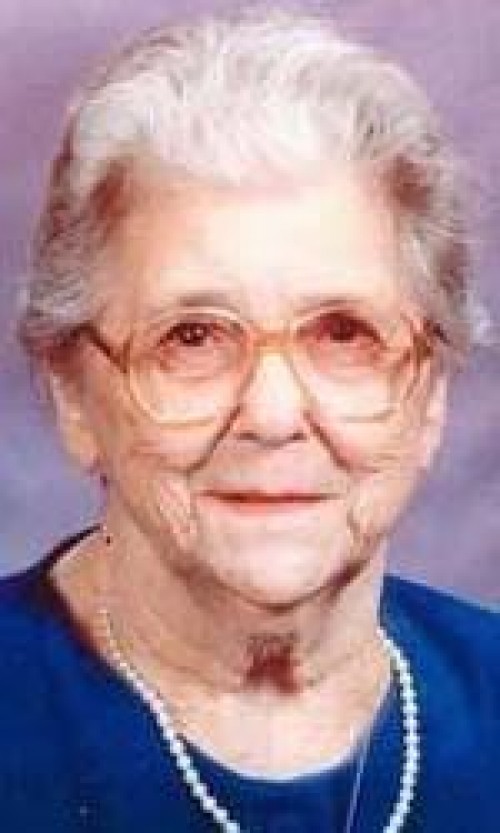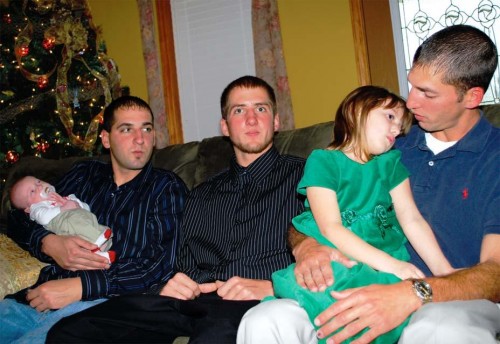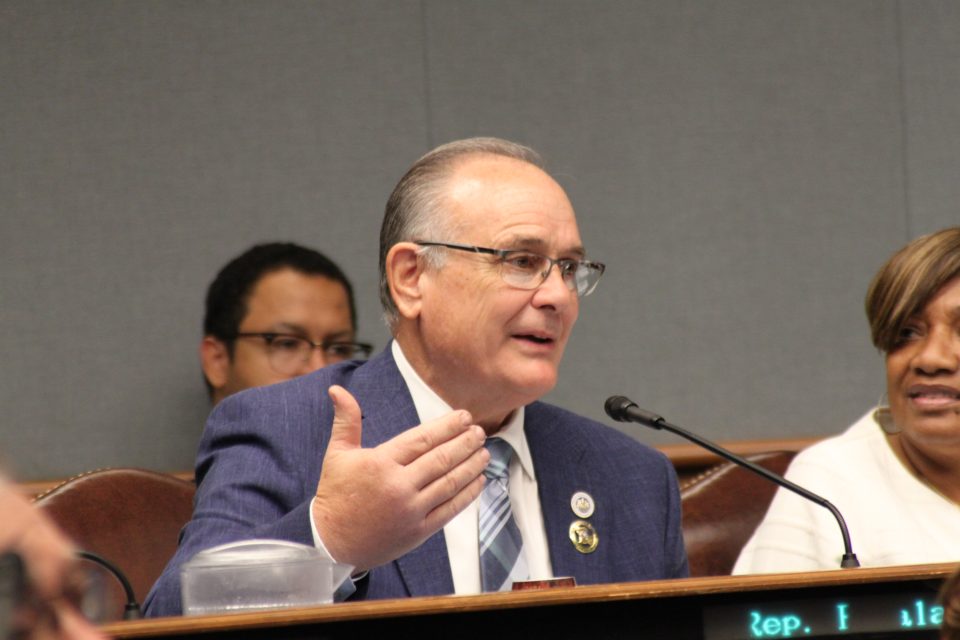Line Dancing Classes (Larose)
December 30, 2008
Henrietta "Noon" Martinez Richard
January 1, 2009On New Year’s Day 2003, a medical mystery began for the Waguespack family of Thibodaux.
Middle son Rusty, 27, could not keep food or liquids in his stomach. He went to Leonard J. Chabert Medical Center in Houma for treatment.
At first, doctors thought he was dehydrated. They injected him with fluids, but that seemed to only make his condition worse.
“All my organs were filled with fluid – my lungs, stomach, liver and kidneys,” Rusty Waguespack said. “I guess they ran enough tests and found out what was wrong with me.”
Rusty was diagnosed with dilated cardiomyopathy, a progressive heart disease in which the heart is abnormally enlarged and thickened, reducing the muscle’s ability to pump blood and often causing heart failure and the backup of blood. The condition can also cause abnormal heart rhythms and sudden death.
What made the diagnosis puzzling was that over two years earlier, older brother, Jade, 28, was also diagnosed with dilated cardiomyopathy, but he did not have the same symptoms.
Jade had returned home from his offshore job with a sinus infection. He spent weeks going from his family doctor to Thibodaux Regional Medical Center to Ochsner Medical Center before learning of his ailment.
“The first time I went to the doctor, he gave me asthma medicine because he thought I had asthma,” Jade said. “When I went back offshore, it wasn’t working. I went back the following week. They (doctors) did an x-ray and that’s when they caught it. On Aug. 8, 2000, I was diagnosed with
cardiomyopathy.”
The brothers would spend years on medications, and eventually both had heart transplants, which revived their health.
Youngest Waguespack brother Trey, 18, has not been diagnosed with cardiomyopathy, but he shows signs of having the disease.
“My heart is working at 45 percent right now,’ Trey said. “Every time I went to get my heart checked, the doctors said my heartbeat was down another five percent or so.”
For parents Mark and Melinda Waguespack, the familial dilated cardiomyopathy has been as devastating as it was unexpected.
“You have your normal family illnesses growing up: colds, measles, broken bones here and there, but nothing to this extent,” Mark said. “One is understandable. Two is like, ‘Whoa.'”
“Lightning struck three times,” Melinda said. “We never, ever thought our kids would be in jeopardy.”
The years between diagnosis and becoming heart transplant recipients were difficult physically and mentally for Jade and Rusty.
However they never had a pessimistic outlook. Instead they focused on recovery and spending time with loved ones. “When I got sick it was just like, ‘Wow. OK,'” Rusty said. “But I didn’t want to stop living my life. I just kept going.”
In the beginning, Jade and Rusty were given medications to try to stabilize blood flow to the heart. Meanwhile, they continued to work until they were physically unable – Jade as a roustabout and Rusty as a laborer for his father’s construction company, Waguespack Construction.
After a few years it became clear that a transplant would be needed
if either was to have a chance at a healthy life.
“The first one or two years, they didn’t think I would make it, but they never gave me the option of a transplant,” Jade said. “By the third or fourth year, I was on the transplant list, but my health was like a roller coaster. When I got
healthier, they took me off the list because there were people worse off than I was. When I went downhill, they would put me higher on the list because I was one of the people who really needed it. A month before I got the transplant, I was status 1A.”
Status 1A refers to patients with a projected life expectancy of between one and six weeks.
Before Rusty was diagnosed with cardiomyopathy, he felt chest pains and had an electrocardiogram (EKG). The test showed no signs of anything wrong, he said.
After being diagnosed, he continued to work. Even though he was put on disability, he had to wait six months before he got a disability check.
“At that time, my wife Natalie was pregnant, so I couldn’t stop working and have no income. I kept working about two-and-a half years before I got too sick to work.”
When his ejection fraction, the amount of blood the heart outputs to power the body, fell to 10 percent, a heart transplant was the only option left.
“My ejection fraction actually fell to two percent. A normal heart ejection fraction is about 65 percent, and mine was pumping at two percent.”
Eventually, he would have a PICC (peripherally inserted central catheter) line inserted in his forearm, injecting medication straight into his heart. The move allowed him to be put on the national waiting list for a transplant.
As Rusty got sicker, it took a toll on his marriage to Natalie (they have since divorced), especially after the birth of daughter Emily, 5.
“I know it was hard for Natalie because at one point it took me an hour to get out of bed,” he said. “I would wake up in the morning, but I wouldn’t be able to get out of bed. The rest of my body would be ready to go, but my heart could not keep up with the rest of me. She would take care of Emily and things around the house that I couldn’t do anymore. It was hard for both of us. I like to do things. It was hard for me to sit there and not do anything.”
For Trey, barely a teenager at this time, the thought that he could someday be in Jade and Rusty’s predicament terrified him.
“I saw them go through so much pain. I didn’t know how I would go through that. It made me nervous,” he said. “I didn’t want my mom to go through this again because I saw what it did to her, and I don’t want her going through that much pain again.”
Mark and Melinda would go through the family tree to see if any other members might have had cardiomyopathy. Despite their large respective families, there were only two candidates – one on each side.
“I had a cousin that was diagnosed, but she got better without a transplant,” Mark said.
“I had one cousin who died at a very young age. Relatives said it was from her heart, but she was never diagnosed,” Melinda said.
“Our situation is very strange,” Mark noted.
“Not strange, unique.” Melinda corrected. “We make good kids, just not good hearts.”
When a heart becomes available, surgeons have only four hours to transplant from the donor to the recipient.
Those on the waiting list must be ready to go at a moment’s notice.
“There is not a good way to preserve the organs. Their preservation is very delicate,” explains Debi Dumas-Hicks, transplant coordinator at Ochsner Multi-Organ Transplant Center in New Orleans. “We don’t have that luxury
of going very far to get a donor organ. That limits how many people can give.”
For Jade, on Nov. 26, 2005, and Rusty, on Oct. 23, 2006, their time had come.
“The night before my surgery, I was out eating with some friends, enjoying my life at the moment,” Jade said. “They called at 3 Saturday morning and said you have to hurry and come in. So I really didn’t have time to think about it. It didn’t really sink in until I was there that it was going to happen. I had the surgery three hours after I got to Ochsner.”
“They called me at about 2 in the morning,” Rusty noted. “I was nervous. I’m trying to pack clothes and then I realized I’m going to be in a hospital bed for a week-and-a-half. No point in packing a bag. After the initial shock of ‘I’m going in for major surgery’ had passed, I was ready to go because I knew it would help me out.”
Both transplants took over nine hours to perform, but “it felt like forever” to Melinda.
“This was the scariest thing we have encountered as a family. We had to learn to give it to God,” Melinda said. “At the same time I was very, very happy for Rusty and Jade, and very, very sad for the donor family.”
For Jade and Rusty, the results were felt immediately – both the good and the inconvenient.
“My friends and parents were saying my color was back,” Jade said. “I had blood flow back to my face. After the third or fourth day, I realized I was breathing better. I felt a little stronger, and I realized this is going to work.”
“My heart hadn’t been beating strong for the longest time. When I got the new heart put in, it was beating strong, and it gave me a headache,” Rusty said.
After a few days of walking around the Ochsner Medical Center corridors to regain muscle strength, Jade and Rusty were discharged.
“Before my surgery, I went to therapy to talk about what if I didn’t make it before the transplant,” Jade said. “Then after the surgery, I went a few times to talk about how it affected me emotionally. Everything was positive, so I
stopped going.”
For the most part, life has been great for Jade and Rusty since their operations. While they both will be on rejection medication the rest of their lives and require annual checkups, they are the healthiest they have been in years.
Despite that, Rusty has not worked regularly since his transplant. He explains that if he works too long or makes too much money, he loses the benefits that pay for his life-saving medications.
“I can’t afford to do that because even though I’m healthy now, what’s to say in the next year something happens where I get extremely sick and I have to quit the job, and now I have no income and no insurance again,” Rusty said. “So I’m kind of stuck. What do I do? Physically, I can do the
work. I have no problem lifting anything. Right now I do try to find small jobs here and there. A lot of my friends know my situation, and they’re willing to give me some money to help me out.”
One thing Rusty has done is spend more active quality time with daughter Emily.
“Before, she would want to play, and I would just sit on the sofa and tell her, ‘I’m sorry, I can’t play with you,'” he said. “That’s hard for a father to do – tell your daughter you can’t play with her. Now we run around the house and play basketball outside. She has a little SpongeBob (SquarePants) basketball she likes to play with.”
Jade works for Deroche Homes Inc. in Houma delivering construction materials to various job sites.
On Nov. 5, he and girlfriend Julie Andras welcomed their so Jrey into the world.
Given the possibility of passing on the genes for dilated cardiomyopathy
and the rejection medication Jade takes to lower the immune system defenses against the recipient heart, the decision to have a child brought on a set of complex issues for the new parents to deal with.
“We talked about it with the doctors, and they said it is unlikely to be a problem for Jrey,” he stated. “But we’re going to keep a close eye on him for any signs of the disease as he gets older.”
Trey, who graduated from Thibodaux High School in May, goes to Ochsner Clinic about every six months to have an EKG and blood tests done.
He recently moved out of his parents’ home and lives with friends in Labadieville. He works in the oilfield replacing valves on oil wells. The car enthusiast has not let the disease change his lifestyle.
“I’m doing what I can, when I can,” he boasted. “I hang out with friends, listening to music. We play football all the time. Basically, any sport, you can catch me doing it. Depending on how I’m feeling that day, I might feel winded very easily or not the whole day.”
There is one more important goal Jade and Rusty want to reach soon. That is contacting their donor families to thank them for prolonging their lives.
Only the Louisiana Organ Procurement Agency (LOPA) knows the name of the donor family. They keep that information confidential unless the donor family wishes to be known.
“I have a letter written, but there are so many things LOPA won’t let you say – your name, age, sex, race, religion, all that kind of stuff,” Jade said. “So you just say, ‘Hey, this is me. I’m healthy. Thank you for your donor.’ It’s
really not a thank you letter because you can’t get deep into it. One of these days, I plan to meet my donor family or hear from them.”
The Waguespack family knows Jade and Rusty are two of the lucky ones. There are over 100,000 people on the national transplant waiting list – 20,000 for hearts only, according to the Department of Health and Human Services.
They hope their story shows everybody that the organ donor program works.
“When I was diagnosed in 2000, the doctors didn’t give me but a year-and-a-half, two years to live,” Jade recalled. “Eight years from being diagnosed and three years since the transplant, I’m still alive. You can’t imagine how
happy I am thinking about how I was supposed to die six years ago.”
The Waguespack brothers – Jade (left), holding two-month-old son Jrey, Trey (middle) and Rusty, holding 5-year-old daughter Emily – are the healthiest they have been since being diagnosed with dilated cardiomyopathy, a progressive heart disease. * Photo by KEYON J. JEFF














